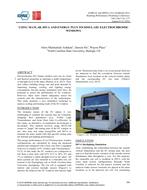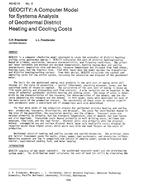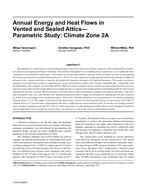Click here to purchase
One of the major outcomes of the recently completedInternational Energy Agency (IEA) Energy and Buildingsand Communities (EBC) Annex 61 “Business and TechnicalConcepts for Deep Energy Retrofit in Public Buildings” is aTechnical Guide (EBC 2017a) that contains a list of coreenergy efficiency technologies generated from the results ofcase studies (EBC 2017b), from surveys and discussionsconducted at the ASHRAE Technical Committee (TC) 7.6,“Federal Buildings” working group meetings in 2013 and2014, and from previous experience and research conductedby the EBC Annex 61 team members. These technologies,when applied together (as a bundle), will reduce total buildingsite energy use by about 50% (including plug loads).Technical characteristics of these building retrofit technologies,grouped into a core technologies bundle, have beenstudied through modeling and life cycle cost (LCC) analysisfor representative national climate conditions. Among thesetechnologies are those related to the building envelope; lighting;and heating, ventilating, and air-conditioning (HVAC)systems.When a building undergoes a deep energy retrofit (DER)that is conducted as part of a major renovation project, the ductsystem is usually replaced. Replacing it with a well-insulatedand airtight system is one of the most cost-effective energy efficiencymeasures available. One reason is that the airflowsthrough air-handling units (AHUs) connected to ducts must besufficient to compensate for air leakage involving ducts andduct-mounted components (HVAC system air leakage). TheseAHU airflows account for a large fraction of the energy use inbuildings. For example, in the United States,HVACsystem airleakage is ranked as the primary source of energy inefficiencyin commercial buildings; it wasted an estimated $2.9 billion in2005 (Mills 2009). Based on research results and experiencefrom the United States and around the world (especially inScandinavia), this paper provides recommendations on costeffectivetargets for ductwork airtightness and a quality assuranceprocess for achieving these targets.
Citation: 2019 Winter Conference, Atlanta, Ga, Technical Papers
Product Details
- Published:
- 2019
- Number of Pages:
- 11
- Units of Measure:
- Dual
- File Size:
- 1 file , 1.1 MB
- Product Code(s):
- D-AT-19-011


